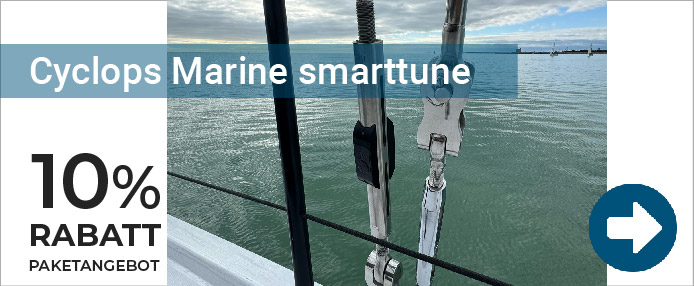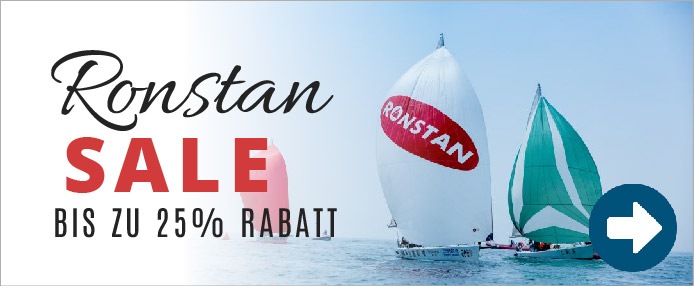Großschotblöcke
Our range of mainsheet systems features technical solutions from leading brands including Ronstan, Antal and Harken. Designed for manual operation, these systems cater to a broad spectrum of applications—from performance dinghies and sportboats to small keelboats. Whether you need fine-tuned traveller setups, ratchet blocks, or cascading purchase systems, we offer components to configure a mainsheet system that suits your specific boat size, rig type, and sailing style. Read more...
Mainsheet Systems – Block Configurations and Purchase Options
Mainsheet systems lie at the heart of sail control on any manually-trimmed boat. Whether you're racing a high-performance dinghy or cruising in a small keelboat, the configuration of blocks used in your mainsheet setup will determine not only trimming efficiency but also responsiveness, load handling, and ergonomics. At Upffront, we specialise in modular mainsheet components from leading brands including Ronstan, Antal, and Harken, supporting a wide range of purchase ratios and attachment methods for dinghies, sportboats, and small keelboats.
This category focuses specifically on block-based mainsheet systems—those that use mechanical advantage via block-and-tackle arrangements, rather than traveller-led control.
Understanding Mainsheet Block Systems
A mainsheet system functions as a purchase setup, converting crew input into controlled movement of the boom and mainsail. The goal is to provide sufficient mechanical advantage to trim under load, while maintaining a responsive and compact system layout. The block configuration—number, type, and arrangement—dictates the purchase ratio, load paths, and trimming ergonomics.
Key terms:
- Purchase ratio – the mechanical advantage created by the block system (e.g., 2:1, 4:1, 6:1).
- Becket – a fixed point on a block used for rope termination.
- Ratchet block – a block with one-way resistance to ease mainsheet handling under load.
- Swivel base – often used at the trimmer’s position, combining a block and cam cleat on a rotating pedestal.
Dinghy Mainsheet Systems
Dinghies typically use low-complexity systems, where minimising friction and weight is paramount. Most systems fall into two categories:
Transom Bridle with Ratchet Block
Used on boats such as the ILCA/Laser, this minimalist setup consists of a rope bridle across the transom and a single boom-mounted block leading to a ratchet block with cleat in the cockpit. The system is usually 2:1, using a boom becket block and cockpit-mounted ratchet:
- Ratchet blocks like the Ronstan Orbit 40/55 or Harken Carbo Ratchamatic provide excellent grip under load.
- Bridle height and boom attachment positioning affect sheet angle and sail twist.
This setup is highly effective for boats under ~5m, providing enough power without unnecessary complexity.
Centre Mainsheet Swivel Systems
Modern dinghies (e.g., RS Aero, 29er, Musto Skiff) use a floor-mounted swivel base with an integrated cleating block. The sheet runs from a boom block to a mid-cockpit swivel ratchet block and cleat:
- Often a 3:1 system, where two blocks are mounted on the boom and one on the cockpit floor.
- Swivel bases such as Harken 144/2135 or Ronstan RF6xx Series allow ergonomic sheeting from multiple hiking positions.

| DiagramRef. | Description | Small Boat Part No. | Midrange Part No. | Big Boat Part No. |
| A | Single | 2600 | 2660 | 1540 |
| B | Single | 2601 | 2661 | 1541 |
| C | Single | 2135 | 2670 | 1549 |
| D | Cam base | 205 | 144 | 1574 |
Harken 4:1 swivel base maisheets systems setup
- Some setups use double ratchets to improve grip and ease of trimming.
Rope diameter for dinghy mainsheets typically ranges from 6mm to 8mm, prioritising low stretch and good hand-feel.
Sportboat Mainsheet Systems
Sportboats (20–30ft) require more robust systems to manage higher sail loads while retaining fine control for tactical trim. Traveller systems may be present, but the block layout of the mainsheet tackle itself remains critical.
Common Configurations:
- End-boom to cockpit floor: A 4:1 or 6:1 purchase system using double or triple blocks at both boom and cockpit anchor points.
- Cascade purchase systems: A 2-stage system (e.g. 2:1 leading into 4:1) for compact layout and high mechanical advantage.
Typical components include:
- Harken Element or Carbo T2 blocks, available in multiple sizes and rigging styles (soft attach, shackle).
- Ronstan Orbit 55/60 or Antal 60/70mm blocks, chosen for strength-to-weight ratio.
- Blocks with beckets to anchor the mainsheet tail, reducing rope clutter.
Ratchet blocks may still be used in some cockpits where loads permit manual holding, but on boats with higher mainsheet loads, cleating is essential. Rope size typically ranges from 8mm to 10mm, with low-stretch cores (Dyneema® or Stirotex®) and durable covers for grip and abrasion resistance.
Keelboat Mainsheet Systems (No Traveller)
On small keelboats without a traveller, or where end-boom sheeting is used with cockpit-floor anchoring, block-based mainsheet systems continue to offer viable control solutions. These setups often rely on multi-purchase cascades or compound tackles.
Typical Layouts:
- 6:1 or 8:1 tackles using a combination of triple and double blocks.
- Fine-tune mainsheets where the gross tune is 4:1 and a second line provides 16:1 trim control.
- Anchoring may be via a fixed floor point or reinforced padeye on the cockpit sole.
Brands like Antal and Harken offer heavy-duty blocks with side-loaded sheaves and higher working load limits for these applications. Compactness and durability are critical, as these systems must perform reliably over long durations and high cycles.
Rope sizes on these mainsheet systems are generally 10–12mm, often requiring careful block sizing to avoid excessive bend radius or sheave friction.
Specialist Options and Considerations
- Soft-Attach Blocks: Increasingly popular for their weight savings and reduced metal contact, especially in high-performance boats.
- Cam Cleats with Fairleads: Integrated into swivel bases or added inline for ergonomic access during high-load manoeuvres.
- Sheave Material: Delrin, composite, or anodised aluminium depending on required durability and friction tolerance.
- Floating Mainsheets: On certain open cockpit designs, using floating sheeting systems can reduce snagging and improve safety.
Summary on Mainsheet Systems
Block-based mainsheet systems remain the most direct and efficient solution for manual mainsail trimming on boats up to ~35ft. Whether configuring a 2:1 dinghy system or an 8:1 keelboat cascade, the choice of blocks—from sheave size to becket arrangement and cleating options—will determine the system’s efficiency and responsiveness.
At Upffront, we stock a broad selection of high-performance blocks from Ronstan, Antal, and Harken, helping you build a system tailored to your boat, crew, and sailing objectives. Our technical range supports everything from Olympic-class dinghies to weekend racing keelboats—all with the precision and reliability that serious sailors demand.

To install this Web App in your iPhone/iPad press
![]() and then Add to Home Screen.
and then Add to Home Screen.



